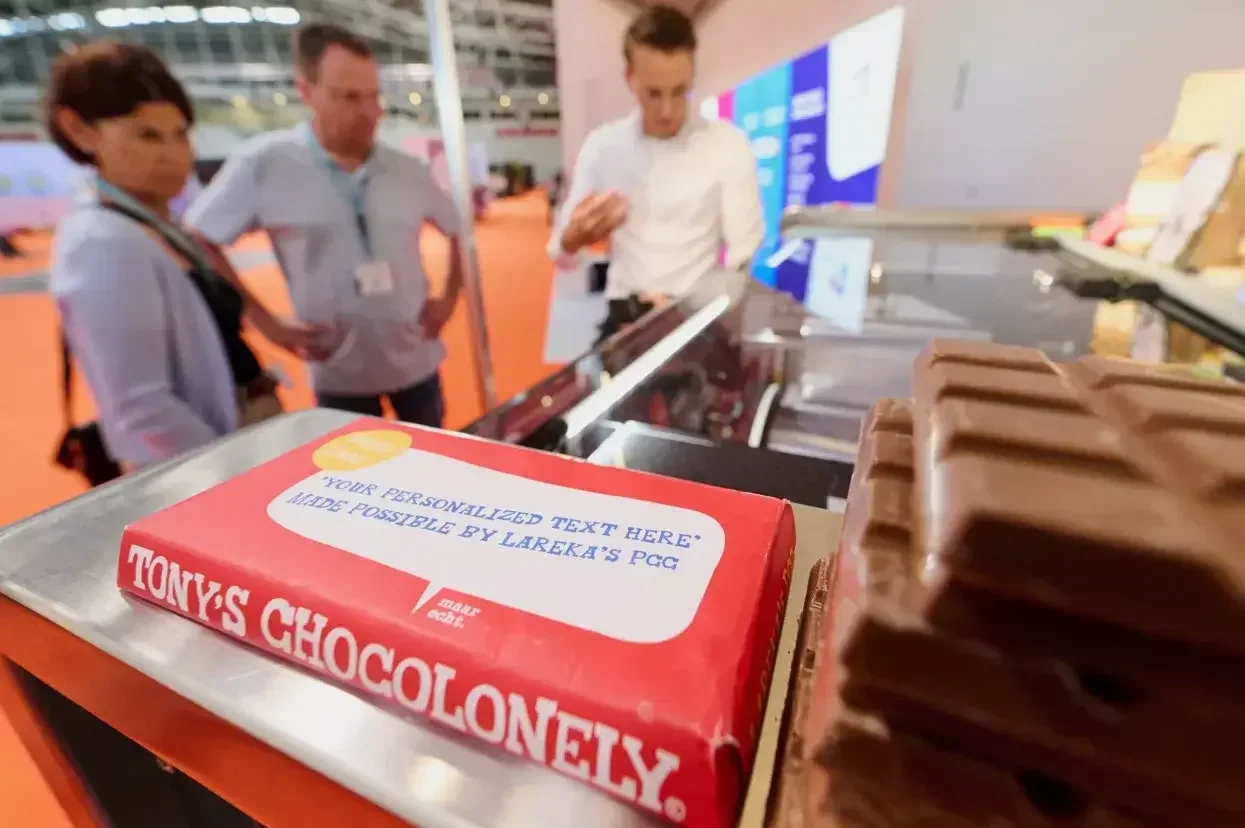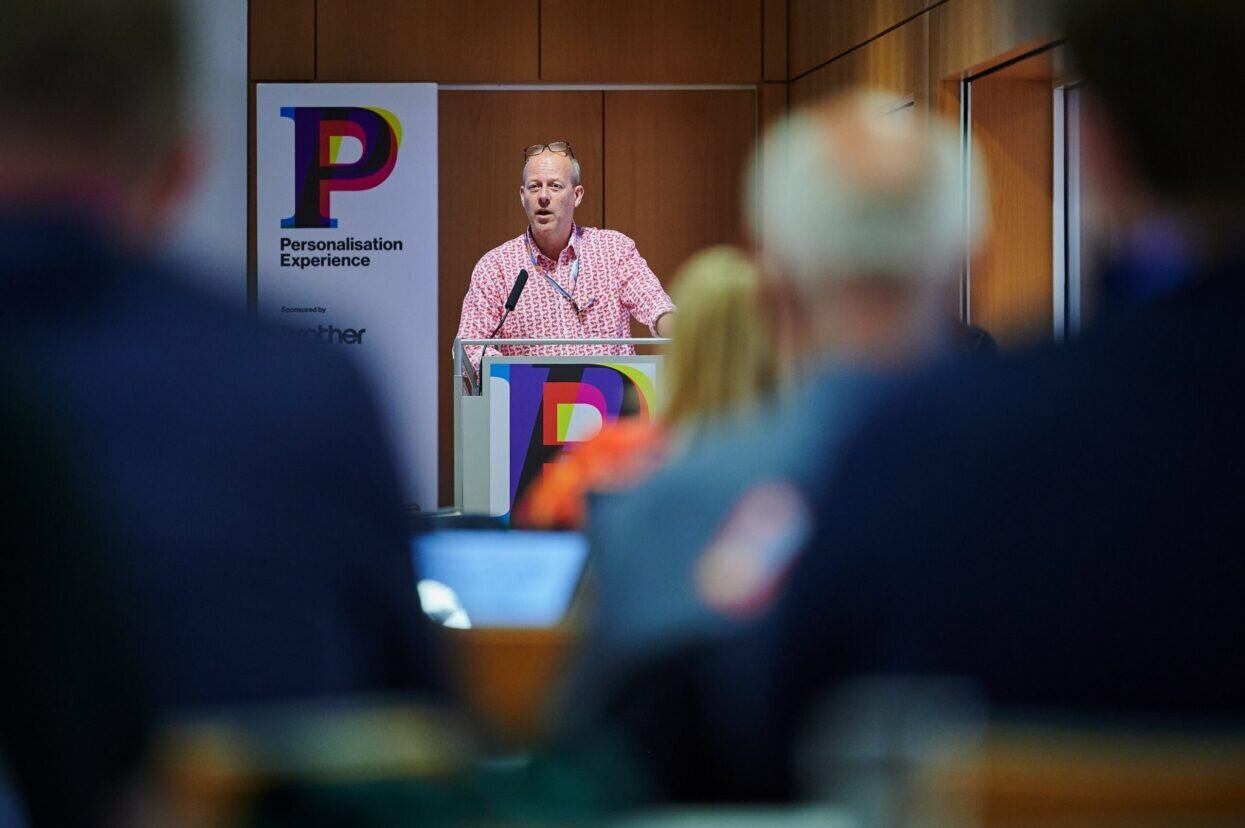
Richard Askam, Personalisation Ambassador at FESPA discusses the opportunities offered in customer engagement by maximising the potential of personalisation.
For the past decade, we’ve observed developments in personalisation-enabling technologies and software for all the industries FESPA represents. Alongside this, we’ve seen some excellent examples of customisation campaigns, such as Coca-Cola’s prominent Share-a-Coke which saw sales increasing by 7% and more than 250 million personalised Coke bottles being sold in Australia within the first three months alone [1].
Another great example we heard about in last year’s Personalisation Experience was Tony’s Chocolonely’s customisable chocolate packaging. However, apart from a few stand-out campaigns, personalisation has become somewhat stuck at the level of putting a name on a product.
While someone’s name is an identifier, it’s actually one of the least emotive things about them. Adding the consumer’s name to a product may still have value for brand awareness, or even as an additional revenue stream in the form of personalised gifts.
However, research from Deloitte found that one in three consumers who are interested in customisation felt that the standard products or services currently ordered do not meet their expectations. So to really reap the potential rewards of personalisation, brands and retailers need to move things up a gear. This includes using insight into consumer preferences and giving customers accessible design tools that allow them to create a product that is truly unique – an opportunity that remains largely untapped.
You might be wondering why this is so important. First and foremost, human beings are hardwired for ego, and personalisation plays into that by recognising the customer’s individuality. This is heightened by the fact that today’s consumers are empowered decision-makers who aren’t afraid to try new things. Alongside this, the rise of social media and ‘always-connected culture’ have made consumer purchases a vital part of self-expression. And data backs it up, too. 72% of consumers state that they expect businesses they buy from to recognise them as an individual and know their interests [2]. So using specific customer information, brands can surprise and delight with personalised products that tap into consumers’ desire to feel special.
That’s why platforms such as Etsy and NotOnTheHighStreet, which place one-of-a-kind products at the core of their offering, have been such a hit. And in the quest for one-off products, design entrepreneurs are successfully using print fulfilment platforms such as Printful, Printify and Merch by Amazon to build businesses selling everything from individualised notepads, to t-shirts, to yoga mats.
Emotionally-connected customers also have a higher lifetime value, stay with a brand for longer and advocate for brands more. In fact, 60% of consumers say they will become repeat buyers after a personalised shopping experience [3]. This alone should be a compelling reason for brands and creators to add personalised products and experiences to their offering. And with research showing that consumers are more likely to buy products again from brands that personalise [4], in my opinion, it’s a must-have.

In conversations with business owners, I can see that one key reason for the missed opportunity with personalisation is a misconception around cost. Developments in software and technologies such as digital print on demand mean it’s now possible to produce one-off, personalised items as cost-effectively as generic ones. Design software, for example, can play a big part in simplifying the customisation process and there are also multiple software solutions that streamline the pre-production process and act as a direct go-between the customer and your production team.
And according to a Deloitte report, 1 in 5 consumers who expressed an interest in personalised products are willing to pay a 20% premium. So when you consider the added value (and margin) that personalisation delivers, cost becomes a poor reason for not providing what consumers want.
For brand owners, the question should no longer be whether it’s possible to personalise something. The technology is here, and has been for some time. The software is advanced, making it easier than ever to personalise and process an item at the click of a button. And customers are interested, to the extent that, in many cases, they’re willing to pay more for personalisation. So the question brands should be asking is, “Where do I get started?”
When we launched Personalisation Experience in May 2023, our aim was to provide practical answers. This year, at Personalisation Experience 2024 (19 – 22 March, RAI Amsterdam, The Netherlands), we’re taking the conversation a step further. Bringing together creative agencies, brand owners, retailers, print businesses and solutions providers, we’ll establish the connections businesses need to capitalise on the personalisation opportunity. There will also be a comprehensive line-up of personalisation-enabling solutions, so it’s easy to find the tools to enhance your product offering.
With a presenting line-up that includes pioneers in personalisation, retail experts and consumer behaviourists, the Personalisation Experience Conference (20 March 2024) will also provide valuable insight into the current and future potential of personalisation, and inspire delegates with new, exciting ideas.
Join us in a journey of discovery and innovation in personalisation, and redefine your relationship with your customers. We look forward to seeing you there!
To find out more about Personalisation Experience and to register to attend, visit: www.personalisationexperience.com.
[1] https://qeola-ennovatelab.medium.com/why-the-share-a-coke-campaign-was-so-successful-a0734c8bcb76
[2] McKinsey. 2021. Next in Personalization 2021 Report.
[3] Motista Inc. 2018. Leveraging the Value of Emotional Connection for Retailers.
[4] McKinsey. 2021. Next in Personalization 2021 Report.